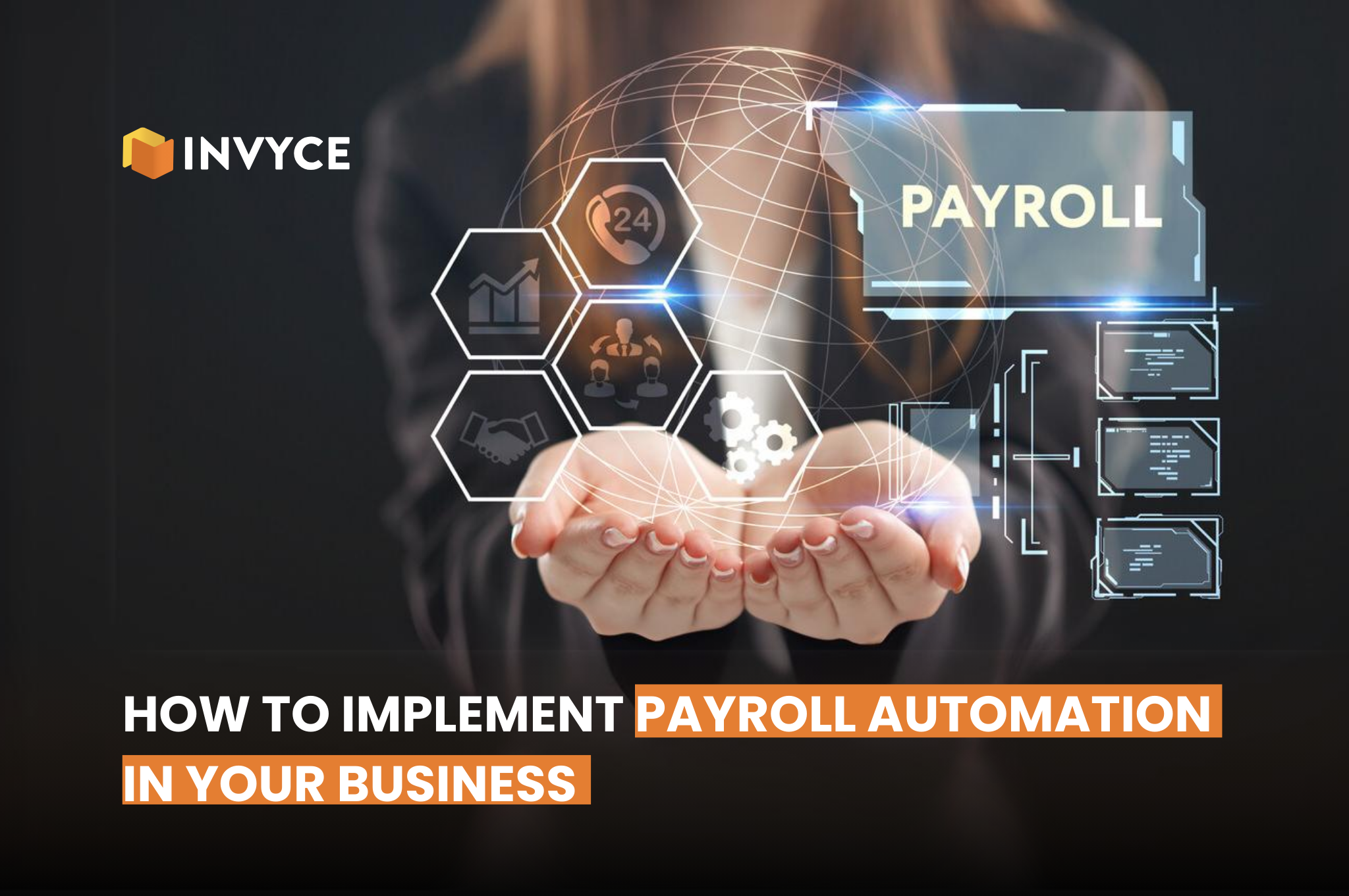29 Aug

When you’re focused on growing your business, payroll might not top your list of priorities—but it should. Managing payroll manually can be a time-consuming and frustrating process, full of opportunities for mistakes. Instead of spending your energy on tasks that feel like a burden, imagine what you could achieve if you released up that time to focus on what really matters to your business. This is where an automated payroll system comes in.
Switching from a manual to an automated system might sound difficult at first, but the benefits are well worth the effort. Not only will you save time, but you’ll also ensure greater accuracy, stay compliant with regulations, and enjoy the peace of mind that comes with knowing your payroll is handled smoothly.
In this article, we’ll explore how to easily switch to an automated payroll system and why it’s an essential move for your business.
1. Assessing Your Current Payroll System
Before jumping into automation, you need to take a close look at your existing payroll process. What’s working well, and where are the bottlenecks? Is your current system prone to errors, or does it require excessive manual intervention? By identifying these pain points, you’ll be able to tailor your automation efforts to address specific issues, ensuring a smoother transition.
How to Do It?
Start by documenting your entire payroll process from start to finish. Gather feedback from the team members who handle payroll this will give you insights into what’s causing delays or errors. Additionally, analyze the time spent on each task, as this will help you quantify the efficiency gains that payroll automation can bring.
2. Choosing the Right Payroll Automation Software
Not all payroll software is created equal. To get the most out of automation, you need to choose a solution that aligns with your business needs. The right software should not only handle basic tasks like calculating wages and generating payrolls, but also offer advanced features such as compliance management, tax calculations, and integration with your existing HR systems.
How to Do It?
Begin by listing the features that are non-negotiable for your business. For example, if your company operates across multiple states or countries, the software should handle varying tax regulations. Next, research and compare different software options, focusing on user reviews and case studies that align with your business size and industry. Don’t forget to request demos or trial versions, so you can see the software in action before making a final decision.
3. Migrating Data to the New System
One of the most important steps in payroll automation is data migration. Your existing payroll data needs to be accurately transferred to the new system without any loss or corruption. This includes employee information, historical payroll data, and compliance-related records.
How to Do It?
Start by cleaning up your existing data remove duplicates, update outdated information, and ensure that all records are accurate. Once your data is clean, you can begin the migration process. Most payroll software will offer data import tools or templates to help you structure your data for the new system. During the migration, perform regular checks to ensure that all data is correctly transferred and nothing is missing.
4. Setting Up Payroll Automation Workflows
With your data in place, the next step is to set up automated workflows that match your payroll schedule. Automation doesn’t mean you lose control it means you gain consistency. Workflows ensure that payroll processes are started at the right time, every time, without manual intervention.
How to Do It?
Define your payroll schedule whether it’s weekly, bi-weekly, or monthly—and set up workflows accordingly. Include steps such as time-tracking, salary calculations, deductions, and tax filings. Additionally, configure alerts and notifications for key milestones, like when payroll is processed or when it’s time to review reports. These workflows should be tested thoroughly to catch any issues before they affect your actual payroll runs.
5. Ensuring Compliance and Security
Payroll is more than just paying your employees; it’s also about staying compliant with labor laws and safeguarding sensitive information. Automated payroll systems can help you meet these requirements, but only if they’re set up correctly.
How to Do It?
Work closely with your legal and HR teams to ensure that the payroll software complies with all relevant regulations. This includes tax laws, wage and hour laws, and employee classification rules. Moreover, ensure that the software has powefull security features, such as encryption and multi-factor authentication, to protect employee data from breaches.
6. Training Your Team
Even the most advanced payroll system won’t deliver results if your team doesn’t know how to use it. Training is important for ensuring that everyone involved in payroll is comfortable with the new system and understands how to leverage its features fully.
How to Do It?
Organize training sessions order to different roles within your payroll team. For example, those responsible for data entry might need a different level of training compared to those who oversee compliance. Hands-on training is particularly effective—allow your team to practice using the software in a controlled environment before going live. Additionally, provide access to resources like user manuals, video tutorials, and a dedicated support line to help them navigate the system post-training.
7. Monitoring and Optimization
After the system is up and running, your work isn’t done. Continuous monitoring and optimization are necessary to ensure that the payroll automation process remains efficient and accurate.
How to Do It?
Set up regular audits of your payroll system to catch any discrepancies or inefficiencies early. Analyze reports generated by the system to identify trends or recurring issues. If something isn’t working as expected, don’t hesitate to tweak your workflows or consult with the software provider for adjustments. Over time, these optimizations will lead to a smoother, more reliable payroll process.
8. Integrating Payroll with Other Business Systems
To fully realize the benefits of payroll automation, consider integrating it with other business systems such as HR, accounting, and time-tracking. This integration not only reduces the need for manual data entry but also ensures that all your systems are in sync.
How to Do It?
Identify the systems that would benefit from integration with your payroll software. Most advanced payroll solutions offer APIs or built-in integrations with popular HR and accounting software. Work with your IT team to establish these connections, ensuring that data flows seamlessly between systems. This step will reduce redundancy and increase overall operational efficiency.
9. Measuring ROI
The success of payroll automation is measured by the return on investment (ROI). Beyond just saving time, automation should reduce errors, improve compliance, and ultimately lead to cost savings.
How to Do It?
Track key performance indicators (KPIs) such as time spent on payroll tasks, error rates, compliance-related fines, and overall payroll costs before and after automation. Compare these metrics to determine the financial impact of the automation. Additionally, consider conducting employee satisfaction surveys to gauge the perceived improvements in payroll accuracy and timeliness.
10. Scaling the System as Your Business Grows
As your business grows, your payroll needs will evolve. The beauty of a well-implemented payroll automation system is its ability to scale alongside your business, accommodating more employees, complex payroll structures, and multi-location operations.
How to Do It?
Plan for scalability from the start by choosing a payroll solution that can grow with your business. Regularly review your payroll processes to ensure they still meet your business needs. If you anticipate significant growth, consult with your software provider about any additional features or modules that may be required to handle increased complexity.
Conclusion
Implementing payroll automation in your business is not just a one-time project—it’s a strategic move that can drive long-term efficiency and cost savings. By following these steps, you can ensure a smooth transition to automation, reaping the benefits of a system that’s not only faster and more accurate but also scalable and compliant. Remember, the key to success lies in careful planning, thorough testing, and continuous optimization. With the right approach, payroll automation can become one of your most valuable business assets.
Marjina Muskaan has over 5+ years of experience writing about finance, accounting, and enterprise topics. She was previously a senior writer at Invyce.com, where she created engaging and informative content that made complex financial concepts easy to understand.
Related Post
Copyright © 2024 – Powered by uConnect



Marjina Muskaan